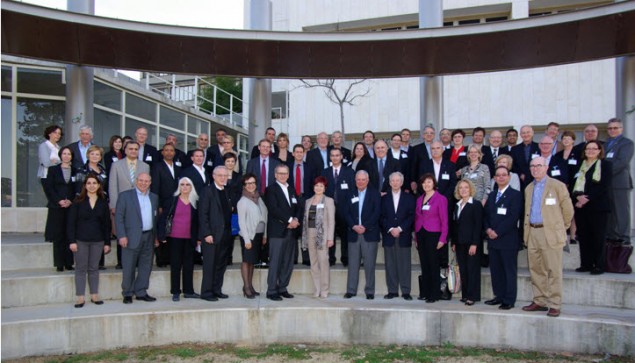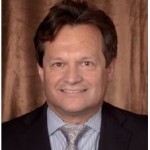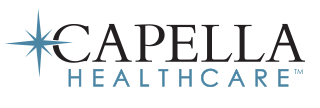
During the five days they were together, these 52 healthcare leaders learned a great deal about the US, Canadian and Israeli healthcare systems. While there are significant differences, there are also many similarities, including goals to improve quality, use technology and operate more efficiently.
Capella Healthcare Co-Founder and Chief Executive Officer Dan Slipkovich was among a select group of North American healthcare leaders who visited Israel in February 2012 as invited guests of the Israel Ministry of Foreign Affairs, the Foreign Trade Administration and the Israel Export & International Cooperation Institute.
Beginning with his arrival in Tel Aviv on Saturday, here are excerpts from his journal about the trip.
Journal of 2012 Israel Trip
By Dan Slipkovich

Saturday, February 4
Long trip overnight and we lost eight hours. So Saturday morning when we landed in Tel Aviv we were a bit foggy. Saturday afternoon was not scheduled and so we spent the afternoon looking around Tel Aviv and the old city of Jaffa. Jaffa is 4,000 years old and gives you new perspective on what old and history is.
Sunday, February 5
Today was filled with meetings with representatives from the foreign and health ministry, speakers of health technology companies, and a presentation by Professor Dan Schechtman, the 2011 Nobel Prize winner in chemistry for “Quasi-periodic Crystals – a Paradigm Shift in Crystallography.” He actually explained in a way the group got!
We spent the afternoon at Sheba Medical Center which is a 1,700 bed hospital, with 7,000+ employees, 1,700 physicians and 96% occupancy. They are very forward-thinking and showed how they are really incorporating technology and research into healthcare.
Overall, Israel spends only 8% of their GDP on healthcare and has a very different model (than the U.S.) with all physicians employed by the four HMOs. But it is changing in many ways so that people can have access to higher levels of healthcare through a supplemental paid health plan and access to physicians working more privatized for these services. I am very interested in getting much more detail and discussions about this the next few days.
Some of the other speakers on Sunday’s agenda included:
- Professor Ronni Gamzu, Director General of the Ministry of Health – “The Israeli Healthcare System – the Challenges It Faces and Its Major Accomplishments”
- Mr. Israel Makov, Chairman-Given Imaging, and Chairman-Bio Light – “Overview of the Israel Medical Industry”
- Dr. Ari Shamiss, Director of the Sheba General Hospital – “Hospital performance Evaluation and Measurement – Is it worth the effort?”
- Professor Daniel Azjfman, President, Weizmann Institute of Science
Good first day, their commitment to technological development in healthcare is amazing. Tomorrow we are in Jerusalem to see a very different setting and facility. In the afternoon we get to tour a bit.
Monday, February 6, 2012
The day started with me trying to stay up to watch the Super Bowl, which began at 1:30 a.m. local time. I made it to 12:45. Couldn’t keep my eyes open.
Another great day. We drove to Hadassah University Medical Center in Jerusalem, one of only two hospitals that serves a population of 750,000. They run 96% occupancy also. Clearly they have major capacity issues.
We had presentations by eight research professors in areas including cancer, stroke, and stem cell therapy that they are doing in MS and ALS. They are clearly doing some amazing things. Some of the speakers included:
- Prof. Yaacov Naparsetk, Chairman, Internal Medicine – “Translational Research at Hadassah”
- Dr. Einat Zisman, CEO, Hadasit – “Hadassah’s Technology Transfer Arm”
- Prof. Abd Al-roof Hijazi, Head, Department of Clinical Biochemistry & CMO, Thrombotech Ltd. – “Developing Treatment for Stroke”
- Prof. Orly Elpeleg, Head, Department of Human Genetics, Hadassah – “Identifying New Disease Causing Genes”
We toured a new bed tower addition which is a one million square foot project costing $350 million dollars. All of the proceeds for this project were donated coming mostly from the US Hadassah Charitable Organization. In the US this project would likely cost $1.2 billion for a lot of reasons.
The new facility is very attractive and functional, but will be moving from rooms that are five bed wards to private and semi private rooms. We spent a lot of time talking about the change this will create in staffing efficiency and preparedness for this. I don’t think they yet understand and will likely see it when it opens in March.
I learned a bit more about the healthcare economics here and in part how in the world their healthcare spending is just 8% of GDP. Some of the basics are an average physician makes $75-90,000 annually, nurses and other clinicians about half that. All equipment and facility construction is funded through donations. So no ongoing debt or capital cost. It is much more complicated than this, but this helps you to start understanding the very significant differences.
We had a break in the afternoon and got to tour the old city of Jerusalem. The entire group was very much in awe to first see Mount of Olives and the various Catholic, Orthodox and other Christian churches. Inside the walls of the city we saw many historic sites like the Dome of the Rock, the Western Wall, all of the various churches’ stations of the cross, and more.
Tonight at dinner our speaker was Mark Regev who is the International Spokesman for the Prime Minister. You see him frequently on US news media addressing key issues. It was very interesting to get the Israeli perspective without the news media twist on it.
A long day, but great day. Tomorrow is another full day as we head towards Gaza.
Tuesday, February 7, 2012
We visited two hospitals today. The first was Tel Aviv Sourasky Medical Center, another very large medical center with 6,000 employees. We continued in our discussions about Israel’s healthcare system with much more opportunity to interact with their management and physician leaders. There are some interesting discussions here that we are going to be following up on.
One of the most interesting parts of this visit was seeing their emergency preparedness facilities. They have four floors underground that house all of their ORs and can – within 24 to 48 hours – house 700 inpatients. The facility can be sealed off for 7 days having all food, water, power and air filtration facilities available. This puts a very new perspective on emergency preparedness.
Some of the speakers we heard from at Tel Aviv Sourasky Medical Center included:
- Prof. Gabi Barbash, Director General – “Talent Management Across Continents”
- Prof. Eli Sprecher, Director, Dermatology Department – “(Rare)2Genetics in Translation
- Prof. Benjamin W. Corn, Director, Radiotherapy Oncology Institute – “The RealTrack™ Technology: A GPS… For Your Prostate”
Rabin Medical Centerwhich is owned by Clalit Health Services, one of four HMOs (or health service organizations) in Israel. Covering four million lives (out of the seven million population), Clalit owns a total of 14 hospitals and employs some 7,000 physicians. This was a bit of a different look from the other hospitals we saw in that it is a more fully integrated delivery system from insurance to clinics to hospitals. Their payment system is a bit more difficult to get clarity on in that they have coverage of what is in the basic government baskets, and what is in the supplemental paid baskets (where physicians work in a more fee-for-service environment in the afternoon but in the same locations both hospital and clinic), and then how Clalit pays its own hospitals for services. This all has been designed by the government to promote competition and choice. It also is causing conflict on when patients are treated and from which baskets.
Because Clalit is a much more integrated system, we spent a good bit of time discussing their system approach on Electronic Health Records (EHR). Their approximate 35 clinics are on a common EHR platform and appear to have an EHR that can be moved through the system as needed with referrals. The hospital side I don’t think is as far along and they are working on this along with community EHR issues with non-affiliated hospitals and clinics. There are a number of companies involved in this that are also spending a lot of time in Nashville these days dealing with many of the same issues. I am sure to hear from some of them when I return.
Some of the speakers we heard from at Rabin Medical Center included:
- Dr. Ehud Davidson, Deputy Director General, Head of the Hospital Division, Clalit Health Services – “Clalit and the Hospital Division”
- Dr. Aaron Allen, Head of New Technologies, Radiotherapy Unit, Davidoff Center – “Advanced Radiation Technologies”
- Dr. Eyal Porat, Herad of the Cardiothoracic Department – “ECMO, Lung Transplantation”<
One thing I failed to mention from a vendor presentation from a previous day was an in-home sleep study product that looks very interesting in that many of our hospitals have sleep programs and could be a way to expand on our programs.
Tomorrow we head to Haifa which is in the northern part of Israel to see a more rural-type facility.
Wednesday, February 8
Today a tour of the Rambam Healthcare Campus in Haifa began the day. We were greeted the Mayor of Haifa Mr. Yona Yahav. Presentations focused on Preparedness, Guidelines and Management for Mass Casualty Scenarios.
In the afternoon we visited the construction site of Rambam’s new west campus, built on top of the world’s largest fortified underground hospital and comprising a children’s hospital, advanced cancer center, cardiovascular care center and biomedical innovations tower.
Thursday, February 9
Today we are at IDF (Israel Defense Force) Medical Training Facility on the base just outside Tel Aviv. This is a large complex that they are getting ready to relocate to be able to use for Tel Aviv’s civilian population for expanded housing in the area due to the tremendous growth in recent years.
Israel’s medical corps exists to provide top level medical care and health services to the Israeli soldiers during their three years of compulsory service and to maintain military infirmaries and field hospitals throughout Israel.
The training center is a very sophisticated training simulation operation in which we toured three training areas. The first was a full simulation mobile OR with fully technology-enabled mannequins with all battle field effects. This set-up can be brought near the battlefront, transported by two Humvees and set up in about an hour. They have had this model for about ten years but have yet to use it in battle.
The other rooms included an individual training room where medics and paramedics train using various “injured” mannequins that again have full system vital sights tied to computers that give feedback on whether or not treatments were appropriately done. The last of the rooms was a battlefield multiple trauma sight where we watched the military team screen, triage, and treat the victims. This was incredibly impressive and sobering. Their teams train in these facilities multiple times per year with Special Forces teams training monthly.
The simulation trainers were all 19-20 year olds who were responsible for training much older higher ranking teams, including physicians. When we asked how they handled training their superiors, they responded “very politely.”
In Israel, except for certain religious and medical reasons, all males and females go into service for a period of 2 to 3 years. Most then leave service and go on to college and civilian careers. This is a very life-altering experience for these kids during which they mature very quickly as was evidenced by the trainers standing in front of CEOs and high-level government officials making their presentations.
Israel does not have a separate VA/military hospital system, so they work very closely with the government and other public hospitals.
We also saw a film on how the Medical Corps used their model and training in Haiti after the massive 2010 earthquake. After the quake, their team of 131 mobilized quickly and had a mobile hospital with 60 beds, 4 ICUs, 2 NICUs, 6 ORs setup and taking their first patient in 89 hours. (That 89 hours included 20 hours of travel!) In 11 days they had 1,100 admissions, 222 surgeries, and 16 deliveries. They were able to wind down once the US Naval Hospital Ship arrived and was able to take on the much of the ongoing care needs within its facilities.
Much of their ongoing medical training for civilian and military facilities is done with very sophisticated simulation systems. I think for the US and our facilities, there could be some similar models used to enhance our programs. Last year a number of our corporate staff participated in HealthStream’s annual conference that included a Norwegian- based company they had partnered with. Now seeing the Israeli programs, it makes me think a bit differently about these programs. I am going to follow-up with HealthStream on programs that could be more practically done for our type of general acute-care community facilities.
We wrapped up with speeches from the military surgeon general and representative of the government.
During the five days we were together we learned a great deal about each other, also about our US and Canadian colleagues and systems. The three systems of healthcare are very different and yet we have many similarities as well, including what we are each trying to do to improve quality, use technology, and improve efficiencies.
